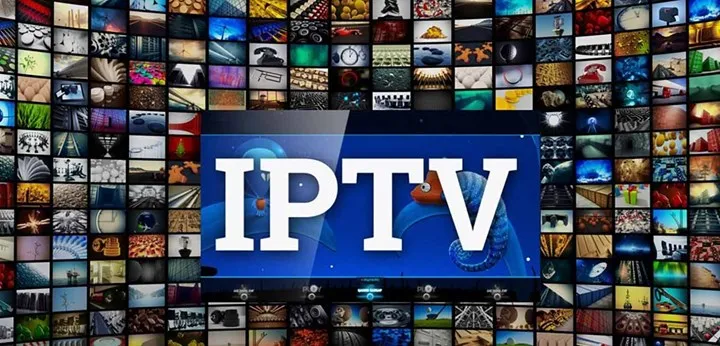how does iptv work

how does iptv work In the digital age, the way we consume television content has undergone a remarkable transformation. Traditional broadcasting methods are being gradually replaced by Internet Protocol Television (IPTV), a technology that leverages the power of the internet to deliver multimedia content to viewers’ screens. In this comprehensive guide, we delve into the inner workings of IPTV, exploring its components, protocols, and processes to understand how this innovative technology revolutionizes the television viewing experience.
Understanding IPTV
Internet Protocol Television (IPTV) is a system through which television services are delivered using Internet Protocol (IP) networks, such as the internet or a local area network (LAN). Unlike traditional broadcasting methods, which rely on terrestrial, satellite, or cable infrastructures, IPTV delivers multimedia content, including live TV channels, video-on-demand (VOD), and interactive services, using internet-based protocols and technologies.

Key Components of IPTV
To understand how IPTV works, it’s essential to familiarize ourselves with its core components, each playing a crucial role in delivering content to viewers:
- Content Providers: Content providers are entities responsible for creating, acquiring, and licensing multimedia content, including TV channels, movies, series, and other programming. Content providers may include television networks, production studios, streaming platforms, and independent content creators.
- IPTV Service Providers: IPTV service providers act as intermediaries between content providers and viewers, aggregating and delivering multimedia content to subscribers. These providers invest in network infrastructure, negotiate licensing agreements, and develop software platforms to facilitate content delivery.
- Content Delivery Networks (CDNs): Content Delivery Networks serve as the backbone of IPTV infrastructure, ensuring efficient distribution of multimedia content to viewers worldwide. CDNs comprise geographically distributed servers that cache and deliver content based on users’ location and network conditions, optimizing streaming performance and minimizing latency.
- Middleware Platforms: Middleware platforms serve as the software backbone of IPTV services, facilitating user authentication, content management, and interactive features. These platforms provide user interfaces for accessing content, managing subscriptions, and navigating program guides.
- Set-Top Boxes (STBs) and IPTV Receivers: Set-Top Boxes and IPTV receivers are specialized devices that decode and display multimedia content on television sets or other display devices. These devices connect to the internet, receive streaming data from IPTV service providers, and render audiovisual content for viewers’ consumption.
- User Devices: User devices such as smartphones, tablets, smart TVs, and computers serve as endpoints for accessing IPTV services. These devices run compatible software applications or web browsers, allowing users to stream content on their preferred screens.
The IPTV Delivery Process
The delivery process of IPTV involves several stages, from content acquisition and encoding to content delivery and playback. Let’s explore each stage in detail:
- Content Acquisition: The first step in the IPTV delivery process involves acquiring multimedia content from content providers. This may include obtaining broadcasting rights, licensing agreements, or direct content partnerships to access TV channels, movies, series, and other programming for distribution on IPTV platforms.
- Content Encoding and Transcoding: Once the content is acquired, it undergoes encoding and transcoding processes to prepare it for delivery over IP networks. Encoding involves compressing the audiovisual data into digital formats suitable for streaming, while transcoding converts the content into multiple bitrates and resolutions to accommodate varying network conditions and device capabilities.
- Content Management and Storage: Encoded and transcoded content is managed and stored on servers or cloud-based storage platforms. Content management systems organize and categorize multimedia assets, allowing for efficient retrieval, distribution, and archival of content within IPTV networks.
- Content Delivery: When a viewer requests access to multimedia content, the content delivery process begins. Content is delivered from the server or CDN to the user’s device using Internet Protocol (IP) packets transmitted over IP networks. This may involve unicast, multicast, or hybrid delivery methods depending on the network architecture and user requirements.
- User Authentication and Authorization: Before accessing IPTV content, users must authenticate themselves and obtain authorization from IPTV service providers. This may involve logging in with a username and password, validating subscription status, or verifying device credentials to ensure secure and authorized access to content.
- User Interface and Playback: Once authenticated and authorized, users can navigate the IPTV user interface to browse, select, and play multimedia content. The user interface may include features such as program guides, channel listings, search functionality, and personalized recommendations to enhance the viewing experience.
- Adaptive Streaming and Quality of Service: IPTV platforms utilize adaptive streaming technologies to optimize video quality and delivery based on network conditions and device capabilities. Adaptive bitrate (ABR) algorithms dynamically adjust video bitrate and resolution in real-time to ensure smooth playback and minimize buffering, providing viewers with a seamless and high-quality viewing experience.
Challenges and Considerations
While IPTV offers numerous advantages, it also presents a unique set of challenges and considerations that stakeholders must address:
- Network Infrastructure: IPTV relies on robust and reliable network infrastructure to deliver high-quality streaming content to viewers’ devices. Network congestion, bandwidth limitations, and latency issues can degrade streaming performance and diminish the viewing experience, necessitating investments in network optimization and capacity planning.
- Content Licensing and Copyright: Securing licensing agreements for distributing copyrighted content can be a complex and costly endeavor for IPTV service providers. Content owners may impose restrictions on distribution territories, viewing windows, and pricing models, complicating the negotiation process and limiting the availability of premium content.
- Content Piracy and Security: IPTV platforms are vulnerable to piracy and unauthorized redistribution of copyrighted content, posing significant challenges for content creators and service providers. Implementing robust content protection measures, such as digital rights management (DRM) and watermarking, is essential to safeguarding intellectual property and preventing revenue loss.
- Regulatory Compliance: The legal and regulatory landscape surrounding IPTV varies across jurisdictions, with different countries imposing regulations on content licensing, broadcasting standards, and telecommunications services. Ensuring compliance with local laws and industry standards is essential for IPTV providers to operate legally and sustainably.
- User Privacy and Data Security: IPTV platforms collect and process vast amounts of user data, including viewing habits, preferences, and personal information, to deliver personalized content and targeted advertisements. Protecting user privacy and securing sensitive data from unauthorized access or breaches is critical for maintaining consumer trust and regulatory compliance.
Conclusion
In conclusion, IPTV represents a transformative paradigm shift in the television industry, offering a versatile, interactive, and personalized viewing experience to consumers worldwide. By harnessing the power of internet technology, IPTV providers are redefining how we consume, engage with, and experience media content in the digital age. As IPTV continues to evolve and innovate, it is poised to shape the future of television and entertainment, driving convergence, connectivity, and content discovery in an increasingly interconnected world.


